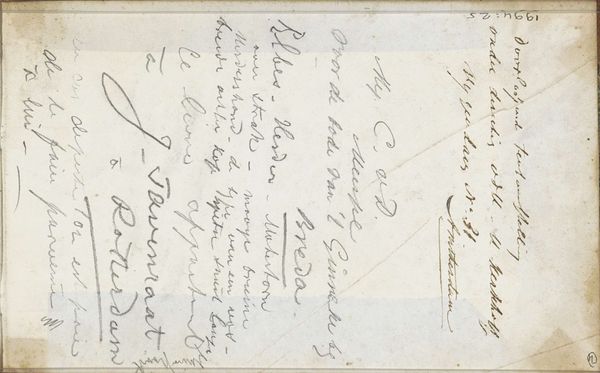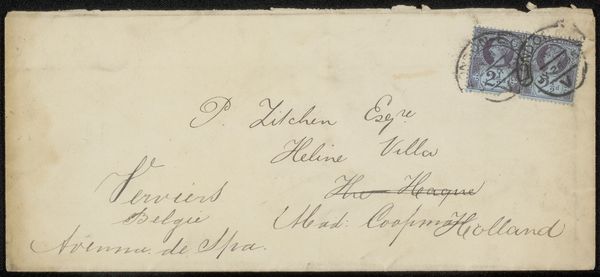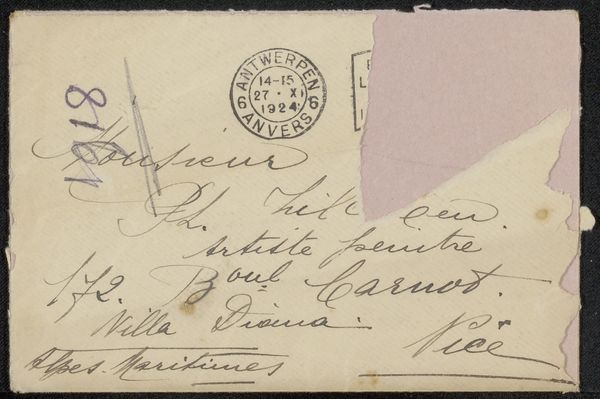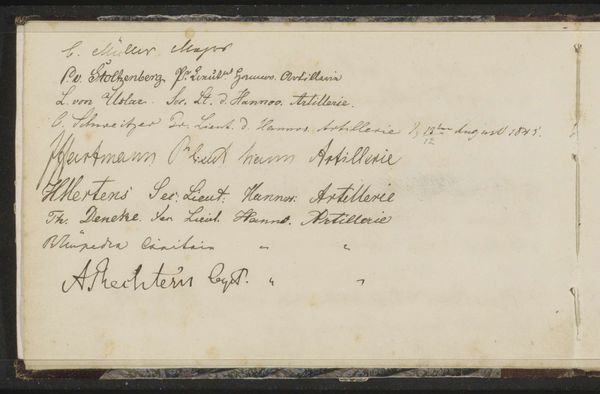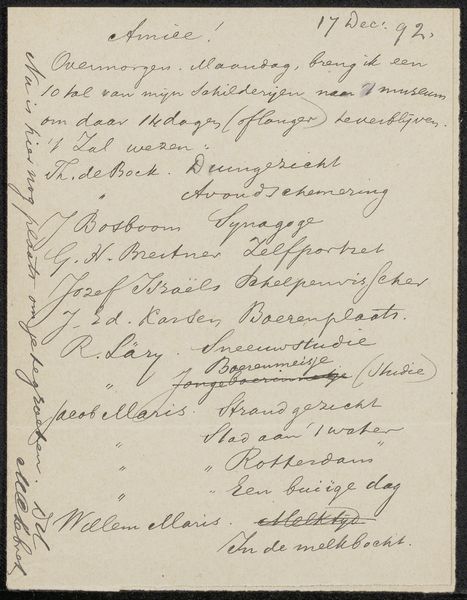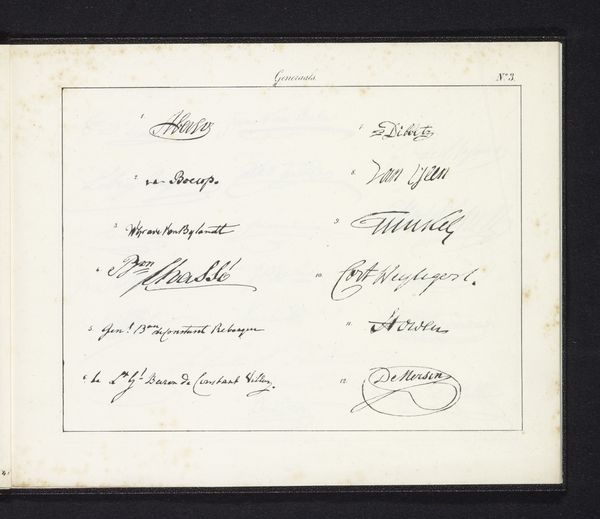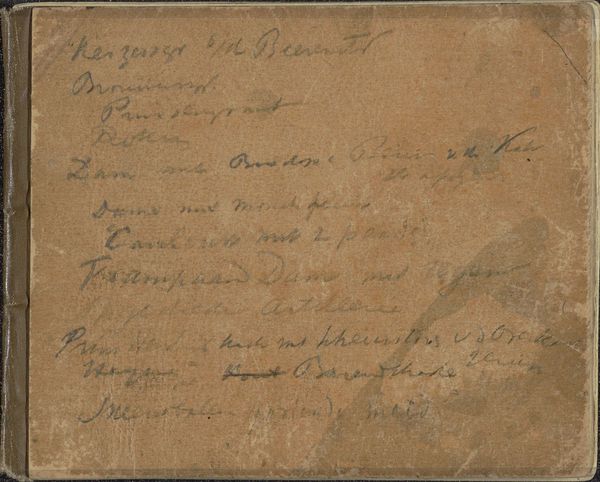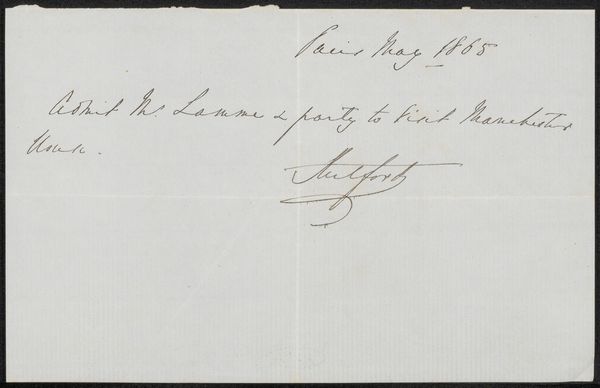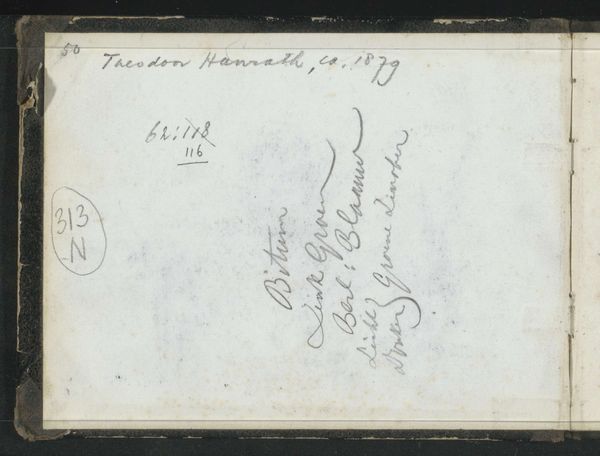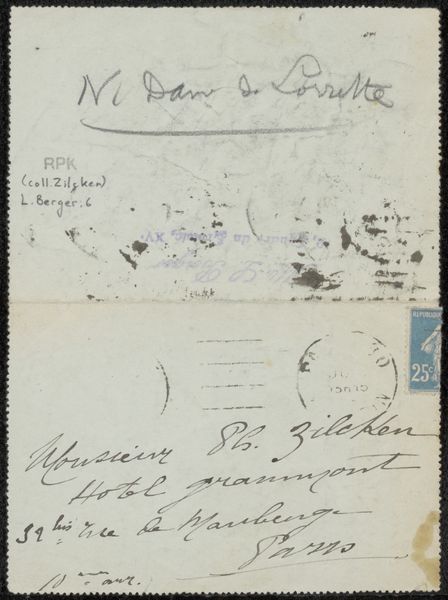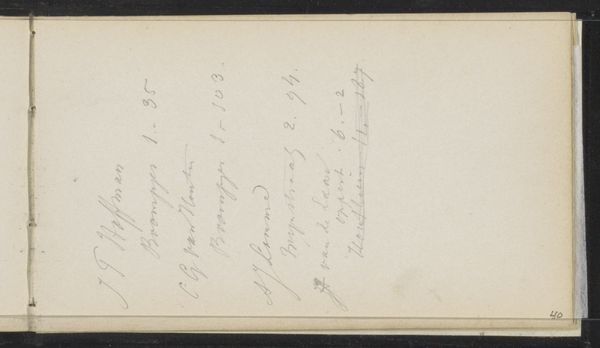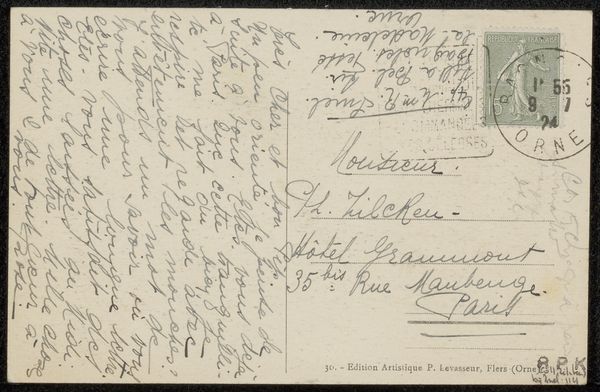
drawing, paper, ink, graphite
#
portrait
#
drawing
#
paper
#
ink
#
romanticism
#
graphite
#
calligraphy
Copyright: Rijks Museum: Open Domain
Editor: This drawing, called "Namen," from around 1845 to 1848, by Christian Heinrich Gottlieb Steuerwald, uses ink and graphite on paper. It looks like a collection of signatures or names. I'm curious, what do you see when you look at this? Curator: I see a document that challenges the traditional art object. It's not necessarily about representational skill in the way a painted portrait might be, but it speaks volumes about social networks and the *act* of record-keeping. Consider the materials – paper, ink, graphite. These are the everyday materials of commerce and correspondence. Editor: So you are saying that it's not trying to be "high art?" Curator: Precisely. And that's where its power lies. It collapses the distinction. The labor involved – the physical act of writing, of collecting these names, suggests a social network being built, brick by brick, through these material acts of inscription. Editor: How so? Curator: Think about the context. Mid-19th century. Who were these people? What did they *do*? Were they merchants, landowners, travelers? The signatures themselves are almost like miniature portraits – each carefully rendered, a performance of identity. Each one uses specific penmanship tools, creating variety but at the same time cohesion through process and output on similar raw materials. Editor: That's a good point. Each signature feels very deliberate. Curator: Exactly! The 'Names', recorded with care. It points to status, affiliation, or indebtedness – we can infer connections based on their proximity to one another on the page, but most especially based on the effort, cost and tools of recording and processing names at the time. Editor: I never thought about calligraphy that way. So, in a way, the art isn’t just the image, it's about all the steps it took to get there? Curator: Absolutely. The entire production – the selection of materials, the skilled labor of penmanship, the social dynamics it represents, *that* is the art. Editor: I am viewing calligraphy in an entire different way!
Comments
No comments
Be the first to comment and join the conversation on the ultimate creative platform.
